Nord Vietnam, For the Armed Forces, June 24th, 1965 (Red stamp) and December 10th, 1965 (green stamp), Michel Nr. M9-10; Two stamps in identical design but different colors were issued for usage by the armed forces. The stamps carried no nominals and were handed out free of charge to active military personell at a rate of 2 stamps a month (issued quarterly). The stamps were produced by the Tien Bo Printing House in sheets of 100 stamps and in perforation 11.0.
Here are the mint stamps.
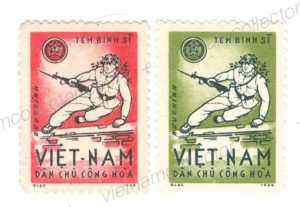
Mint blocks of four.

These stamps were not officially issued imperforate but a small number of imperforate trial proofs have come to market. Here are two them.
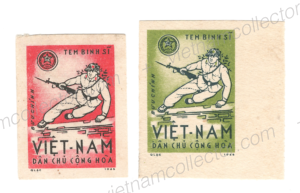
Here is a true piece of history. It is a combat cover (sometimes also referred as a bullet-hole cover) that was taken by either an ARV or an American soldier after wounding or killing a North Vietnamese mail man. Each side in the conflict was trying to gain an advantage by securing intelligence from the enemy so mail personell were a valuable target. It was a requirement that all mail taken in combat was to be handed over to the intelligence branch for translation and analysis which makes this type of mail so rare these days. So, most of these covers ended up in the files of the CIA or were destroyed after analysis. It was illegal to retain them but some service men nevertheless kept some envelopes as war trophies. This cover clearly shows the marks of bullet holes or shrapnel damage that was inflicted in the fight. The letter was addressed to another military unit as indicated by the Hom Thu Nr. on front. This number is associated with a central collection point for letters intended for recipients located in the South. The envelope is a typical adversity cover that was fashioned out of old note paper. The post man was intercepted prior to reaching the post office as there is no cancellation mark yet. It contains a letter from December, 1967 that, when folded, line up perfectly with the bullet holes. The sender was very talkative and disclosed a lot of information. He was sent to China to attend Driving School, came back and then traveled the HCM Trail carrying supplies for the troops in the South. While in China he thought his brother#s unit was still in Phu Tho. By the time he wrote this letter his brother had been in the South for two years. This is a family of privilege. His father was a manager at the Vietnam News Agency. His mother was with the Ministry of Architectural Design. His sister was with the Civil Engineering Department. Very rare!
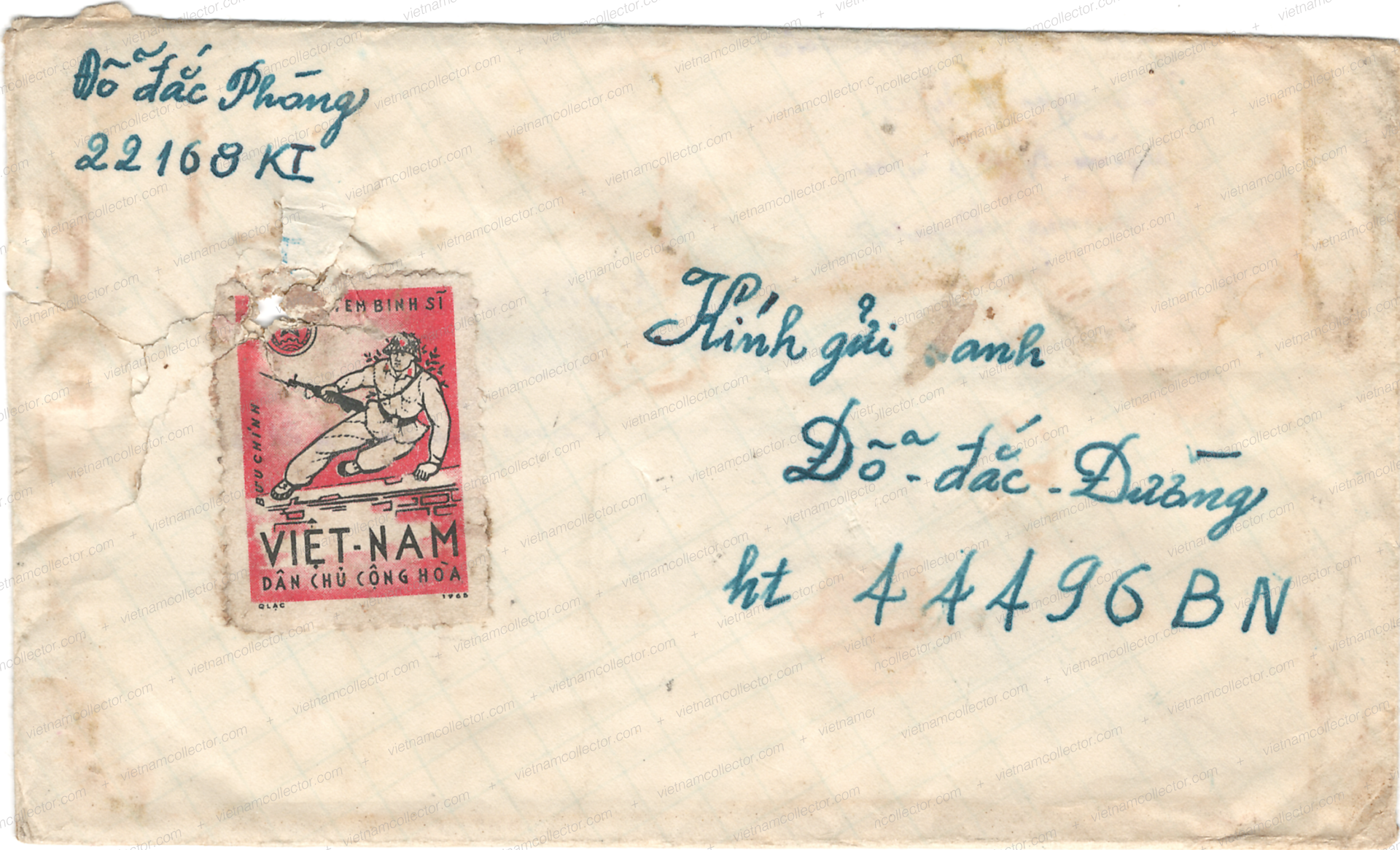
Rare postally used local letter sent by a member of the military (note the Hom Thu number in the sender line) to Hanoi. The red stamp is cancelled with a dateless military cancel. Most local letters were destroyed in the multi-decadal war, the tropical climate and by recycling due to raw material shortages.

Another local letter showing the late usage of the red stamp on a letter from Hai Phong to Saigon in October of 1975 (shortly after the fall of Saigon). Hai Phong machine cancel. This may be a civilian use of the stamp as there is no indication of a Hom Thu or military unit number.
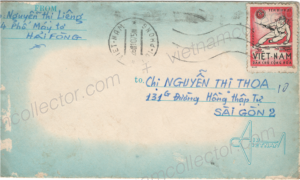
Local letter sent by a member of the military (note the Hom Thu number in the sender line) from An-Thi to Hanoi in January of 1965.
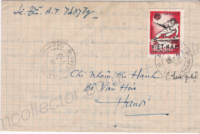
Local letter using the green stamp sent by a member of the military (note the Hom Thu Nr. in the sender line) to Thai Binh in June of 1966. Thai Binh arrival cancel on the reverse.
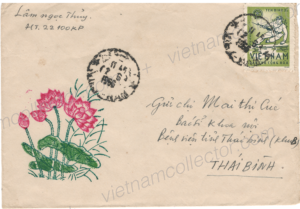
Local letter using the green stamp sent to a member of the military (note the Hom Thu in the address) in My of 1966.
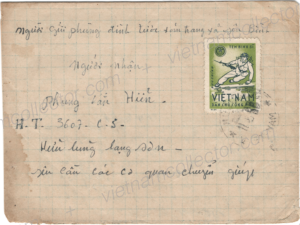
Local Letter using the green stamp and sent by a member of the military to Hanoi in 1966.
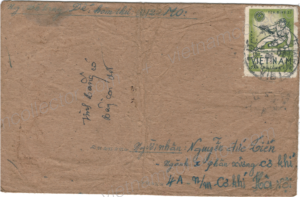
Local Letter using the green stamp and sent by a member of the military to Hanoi in 1966. Hanoi arrival cancel on the reverse.
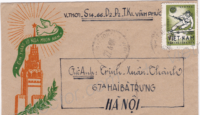
Military Free Franks without any nominal value were not valid for international postage according to UPU rules so they were only intended for domestic usage. Here is a very rare international express mail letter sent to Klewitz from Quan 5 in April of 1981. The letter features both perforation versions (11.0 & 12.5) of the blue military stamp and the red military stamp with the plate error “tank in action” along with other military stamps from the period. It appears that the stamps were accepted by the postal clerk without any issue and that they credited with a 12 xu nominal. The overall postage amounted to 14.76D (including the two red free franks). Kassel transit and Fulda arrival cancels on the reverse. Fragment of green Fukda custom cancel on front.
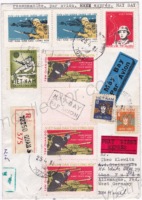
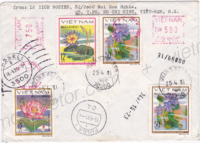
Registration Nr. 101091

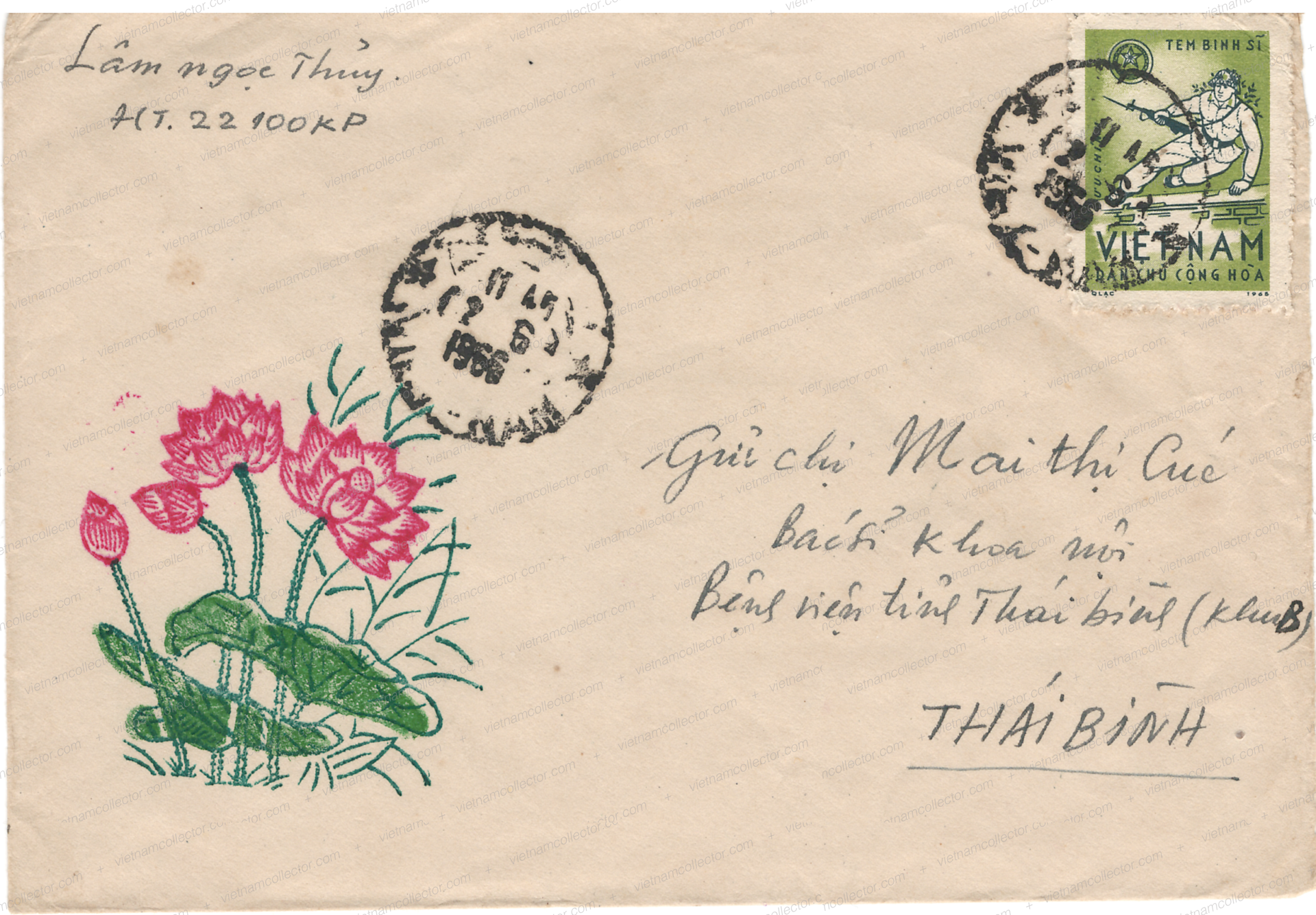
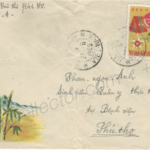
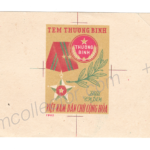


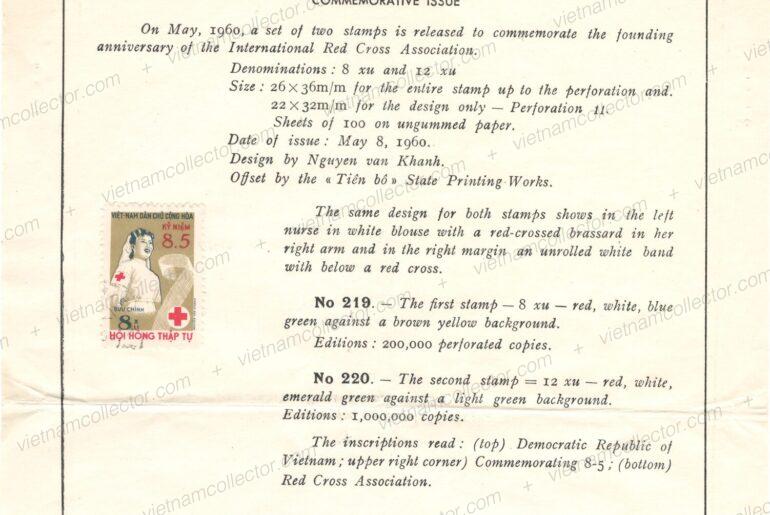
Comments are closed.